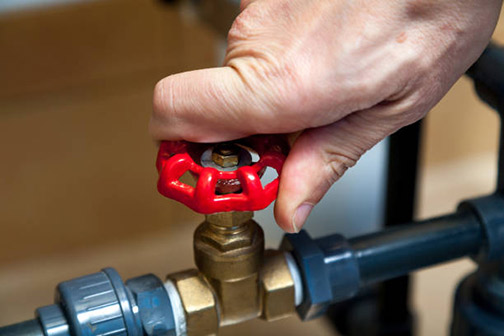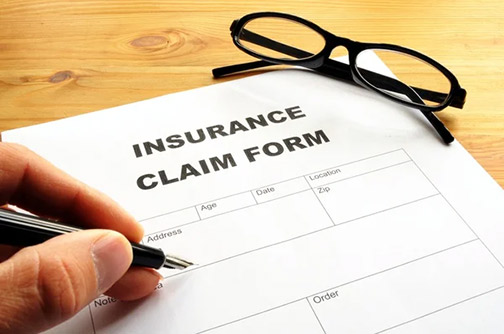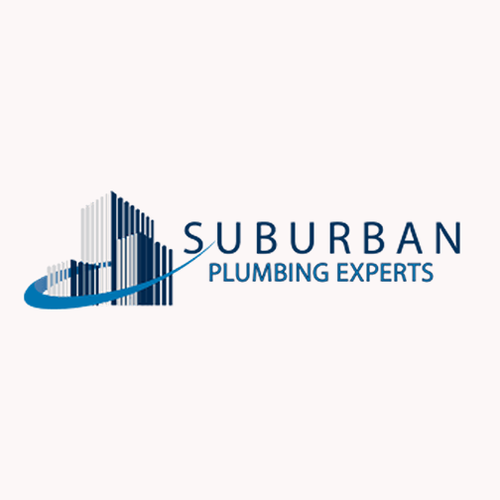Burst Pipe in Brookfield-What to Do Immediately
A pipe bursting within a Brookfield, IL home is a high-stakes emergency that requires calm and definitive action. The moment you notice gushing water, a hissing sound, damp walls, or a sudden drop in water pressure, you begin a race against time. First, prioritize safety. If the water is near electrical outlets, appliances, or outlets on the floor, avoid stepping into the water and move occupants away from the wet area. If there is any hint of a gas smell or you suspect a gas line could be involved, head out of the home instantly and call the gas utility from outside in a safe location. Then call emergency services or your local 24/7 plumbing emergency line. Clearly state that you have a burst pipe in Brookfield, describe the flow of water, and give your address as accurate as possible.
While responders are on their way, limit the extent of water by closing doors into the space where the leak has occurred and remove your valuables from potential contact with floodwater if it’s safe for you to do so. This initial stage aims at minimizing property damage, keeping your family safe, and winning precious minutes before the professionals arrive.
Safety First: Assessing the Scene and Protecting Your Family and Home
Take a moment, before trying to do anything yourself, to observe the scene with a safety mindset. Water and electricity can be a lethal mix, so avoid touching wet appliances or power strips. If you have access to a dry area away from the burst pipe, take family members and pets there and keep them away from the affected zone. If the pipe has burst in a kitchen or bathroom where water is collecting, shut off the circuit breakers feeding the area, but only if you can safely reach the main electrical panel from a dry spot. If you have a strong odor of gas, go outside and immediately call the gas company.
In Brookfield’s winter months, pressure surges and pipe failures are more common in areas that don’t get much heat, including basements, crawl spaces, garages, and exterior walls. Realize that cold has already taken its toll on the materials, and frozen or partially frozen pipes will not get better when the water pressure comes back. While you wait for the responders, you can still take small, careful steps that reduce your exposure to hazard, such as directing everyone to the safe zone and keeping paths clear for emergency personnel.
Shutting Off the Water Supply: How to Find and Operate the Main Valve
The next important step is to turn off the water supply to stop the flow and limit the amount of damage. Find the main water shutoff for your Brookfield home. Most common places include a valve on the main water line in the basement, crawl space, garage, or outside near a concrete slab or in a utility area. Some homes may have a dedicated shut-off near the water meter or inside a mechanical room. Once located, turn the valve clockwise until it stops. If the valve is stubborn or corroded, do not force it; instead, call emergency services or a licensed plumber to avoid further damage or the breaking of the handle.
Mention any inability to locate or get to the main shutoff due to water in the area to the dispatcher so that responders can focus on how safely to shut the water off or bring equipment to assist. After the main valve is shut, you should see an immediate reduction in water flow, which will prevent further flooding and make cleanup much easier for the plumbers.
What to Avoid & What to Do-Water Control and Electrical Safety
Continue to control the immediate hazards without putting yourself at risk. With the water supply turned off, do not try to plug or unplug electrical devices that have been in contact with water; instead, switch the power off at the main circuit breaker if safe to do so from a dry location. If you cannot safely get to the panel, wait for a licensed electrician or emergency plumber. Avoid standing water near electrical outlets or appliances, and don’t use electrical equipment in the flooded area until the pros confirm it is dry and safe. If you smell any strong electricity smells or a strange buzzing from outlets, evacuate the area and let responders know upon their arrival.
The goal is to minimize exposure to electricity while maintaining structural safety and keeping access routes open for the pros who will arrive to shut off gas lines, evaluate structural integrity, and begin containment. In Brookfield, where cold-weather pipes are common, the potential electrical hazards can increase with ice and condensation. So be even more cautious and rely on trained responders for the final word on safety.

What to Tell Dispatchers: Information That Helps Emergency Responders
When you call the dispatcher, give specific, actionable information so responders can arrive prepared. Give the exact address, including any nearby landmarks; note the time you first observed the issue; and describe any visible indicators of a burst pipe, such as active water flow, spraying water, or a sudden drop in water pressure. Say whether or not you can access the main shutoff and if you’ve already shut it off, and indicate if there is any gas smell or if you suspect a gas line may be involved. Mention how many people are in the home, whether there are small children, elderly residents, or pets that may need assistance, and whether there are obstacles like stairs, curbs, or narrow doorways that emergency plumbers should plan for when bringing equipment.
If the water is coming from a particular wall, ceiling, or appliance, share that detail-it will help guide a quicker assessment. Lastly, let them know about any ongoing construction or recent plumbing work in your home, since prior changes can affect how the system will behave in an emergency. The more precision you provide, the quicker plumbers can triage the scene, secure the area, and begin water control strategies to minimize damage.
What Local Plumbers Will Do on Arrival: From Assessment to Containment
When Brookfield emergency plumbers arrive, they will perform a rapid, structured assessment to protect life and property. They will confirm the safety of all present, check for immediate hazards such as energized water or gas leaks, and establish a perimeter to prevent unintentional entry into the affected zone. Plumbers will work with you to confirm whether the main water supply has been shut off and may proceed to shut off gas if a leak is detected or suspected. They will conduct a basic assessment of structural integrity, particularly in basements or lower levels where water intrusion has compromised the supports or electrical.
Following confirmation of safety, typically, plumbers establish containment to stop further water intrusion and provide ventilation as necessary, and may coordinate with water utility or municipal crews if downstream supply issues exist. They may document the scene for insurance purposes, along with providing brief guidance on what immediately you can do under their supervision. These include keeping areas accessible for follow-up work or even staging a temporary sump pump if licensed and equipped to do so. Their priority is to stabilize the situation, preventing additional damage while ensuring your safety and access to essential living spaces when possible.
Industry Specific Risks in Brookfield Include Winter and Early Spring Challenges
Brookfield’s climate, characterized by freezing winters and variable early-spring temperatures, creates its unique risk profile regarding burst pipes. During winter, the most common cause of pipe failures is freezing temperatures that cause pipes to crack or burst when the water expands while freezing-or pressure develops from trapped water. Uninsulated pipes in exterior walls, attics, basements, garages, and crawl spaces are particularly susceptible. Sudden cold snaps can also lead to sudden pressure changes in the water system as indoor heat cycling shifts. Early spring may bring another wave of risks when temperatures rise and water that has frozen expands, embrittling internal plumbing, sometimes under the weight of thawing ice in walls or ceilings.
Homes with active renovations, poorly insulated plumbing, or older piping systems made from brittle materials like galvanized steel or certain copper alloys are especially vulnerable to these conditions. Seasonal habits of closing off vents, running water to prevent freezing, and sudden power outages affecting heating systems interplay with plumbing to cause bursts. Understanding these risks helps residents respond more quickly and coordinate with local Brookfield, IL plumbers to mitigate damage and restore normal service levels.
Reducing Damage While Waiting for Help: Practical Steps You Can Take
While you wait for professional help, there are practical steps that can meaningfully reduce the extent of water damage, if you can perform them safely. Start by keeping the shutoff valve off to stop any further flow and place absorbent towels or a bucket to catch the drips from the pipe at its source, especially near a wall or ceiling. Move valuables and important documents to higher shelves to protect them from moisture and consider laying down protective coverings or towels to protect flooring from standing water as the area is drained. If the leak is isolated behind an appliance or in the wall cavity, you might be in a position to collect water temporarily with a bucket and route it away from critical systems, but refrain from sealing or patching the pipe yourself unless you are properly trained and equipped; forcing a fix can cause further damage or create a safety hazard.
Document the scene with photographs that show the pipe, the level of water, and any visible damages to walls, floor, or ceiling. This documentation may be priceless for insurance claims and for the plumber when he finally arrives. Lastly, clear access routes for plumbers to the scene by removing obstacles like furniture or rugs that would impede movement or placement of equipment. Install or reposition a sump pump, if it is safe to do so and if it’s operable without standing water on electric devices. Otherwise, let the plumbers address indoor water control.

Insurance, Documentation, and Cleanup: Post-Incident Considerations
Once the immediate danger has passed, the focus shifts to recovery and documentation for insurance purposes. Contact your homeowner’s insurance company as soon as possible, report the incident that occurred, and initiate the claims process. Collect and preserve all documentation relevant to your claim: photos of damage, a list of damaged items, receipts for purchases made out of emergency necessity, and notes from conversations with emergency plumbers. An inventory helps the adjuster understand the scope of the loss and makes the evaluation more accurate.
If mold growth is suspected or if the environment remains damp, you will likely need to hire water-damage restoration professionals who are trained in extraction, drying, and moisture monitoring to prevent long-term issues. Also, document remediation steps, including drying times, equipment used, and any repairs conducted, to support the claim. It is important to maintain a clear line of communication with your insurer and your restoration contractor, aligning expectations for timelines, costs, and the scope of work. In Brookfield, where homes can include complex plumbing configurations with piping embedded in walls, coordination with licensed professionals ensures proper remediation and helps to protect the structure’s integrity for years to come.
Choosing and Coordinating with an Emergency Plumber in Brookfield
Choosing the proper emergency plumber in Brookfield can make a big difference in both speed and quality of response. Look for 24/7 availability, clear estimates, and transparent communication. A good emergency plumber should be licensed and insured, and their technicians should show clean safety habits, respect for your property, and adherence to Brookfield’s local code. If you call a plumber, ask about how long until they can arrive, what work they think will need to be done, and if they have any equipment on hand for immediate water shutdowns, pipe location, or temporary containment.
Also, check to see if their services include post-repair testing to ensure that there are no remaining leaks and that your hot and cold water systems are working properly. If your insurance requires a preferred vendor list, ask for guidance and coordinate through your insurer for ease of process. Positive reviews, a track record of transparency in pricing, and a clear written agreement will help you avoid any surprises. Upon arrival, the plumber should start immediately with a rapid assessment, explain to you why the burst happened, outline a plan for repairing the burst pipe, and give a realistic timeline for when a fix can be initiated and completed, including any temporary measures you may need inside your home to protect it during the process.
In Brookfield, where there are historic homes and newer buildings, a local plumber who can understand the more common piping materials and weather-driven failure patterns of the region can be a real asset in providing efficient and durable solutions.
Preventive Measures for Future Bursts: Proactive Steps for Homeowners
The best strategy for preventing pipe bursts involves minimizing disruptions and expenses. To this end, start with the insulation of exposed pipes, especially those passing through unheated areas such as basements, garages, or crawl spaces. Adding insulation on exterior walls or upgrading it, together with the installation of heat cables or pipe heaters in those sections most vulnerable to low temperatures, will significantly decrease freezing in Brookfield’s climate. Indoor temperatures should be maintained without large fluctuations to reduce temperature stress on the piping, while a slow, steady faucet drip may be allowed during periods of extreme cold to relieve pressure and prevent freezing.
Regularly inspect plumbing for signs of wear, corrosion, or leaks at joints, connection points, and pressure valves. Moisture alarms should be installed near plumbing fixtures and also in crawl spaces to quickly detect any new leaks, while using a modern leak-detection device makes it possible to receive alerts on your phone upon abnormal moisture detection. Upgrading older piping materials prone to failure with more resistant ones, and assuring that all supply lines are properly supported to prevent sagging that can result in joint fatigue, is also important.
Finally, make a simple maintenance plan so your family knows how to respond during cold snaps: know where the main shutoff is, where towels and buckets are kept for quick containment, and how to call a trusted local emergency plumber or service provider in Brookfield. As you emphasize, proactive checks and preventive upgrading go a long way toward improved resilience against seasonal hazards that Brookfield homes face each winter and early spring.
Burst Pipe in Brookfield: A Step-by-Step Action Plan Quick Reference
For those who prefer a concise, repeatable script, consider this step-by-step plan, which has been tailored to Brookfield’s climate and common emergency scenarios. First, confirm safety by getting all people and pets away from the area of impact, avoiding contact with any potentially contaminated water or sources of electricity, and by calling emergency services or a licensed plumber if immediate danger exists. Second, locate the main water supply and turn it off, using the valve directions and avoiding forcing any obstructed handles. Third, determine if any gas lines may be involved and, if so, vacate the premises immediately and alert the responding team for area securing.
Fourth, provide the following essential information to the dispatcher and the responding plumber later: the address, symptoms observed, the location of the leak, whether power to the area is on, and any factors that might complicate access or work. Fifth, await responders, keeping doors closed to minimize damage and ensuring unobstructed access routes. Sixth, let the emergency plumber take over the scene, providing them with access to the area of impact and any additional valve shut-offs if the plumber so requests, and following their safety recommendations.
Seventh, photograph the scene for insurance and remediation records, including initial impact and any temporary containment measures you performed. Eighth, initiate cleanup and drying only when professionals clear you to do so, using fans and dehumidifiers according to their guidance, while also avoiding the use of bleach or other cleaners that may interact poorly with compromised materials. Ninth, call your insurer to begin the claim process and provide a complete accounting of the incident, the actions taken, and timelines anticipated for repair and restoration. This reference plan offers a consistent, safe approach to managing burst pipes in Brookfield and ensures that every step needed-from immediate response through final restoration-is handled in an efficient manner with minimum disruption to your family’s routine.
—
Are you in need of an emergency plumber in Brookfield, IL due to a burst pipe? We can help! Call us NOW at 708-518-7765!


